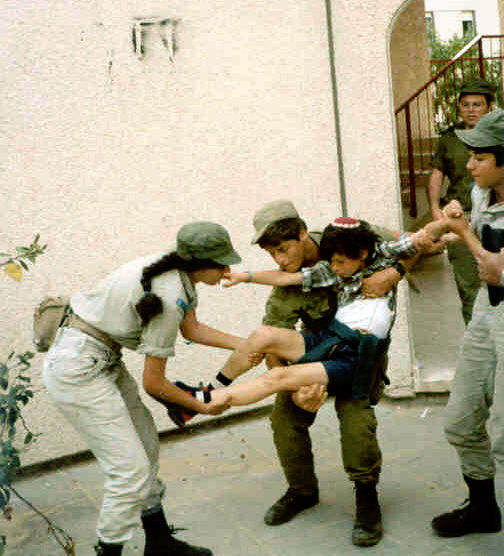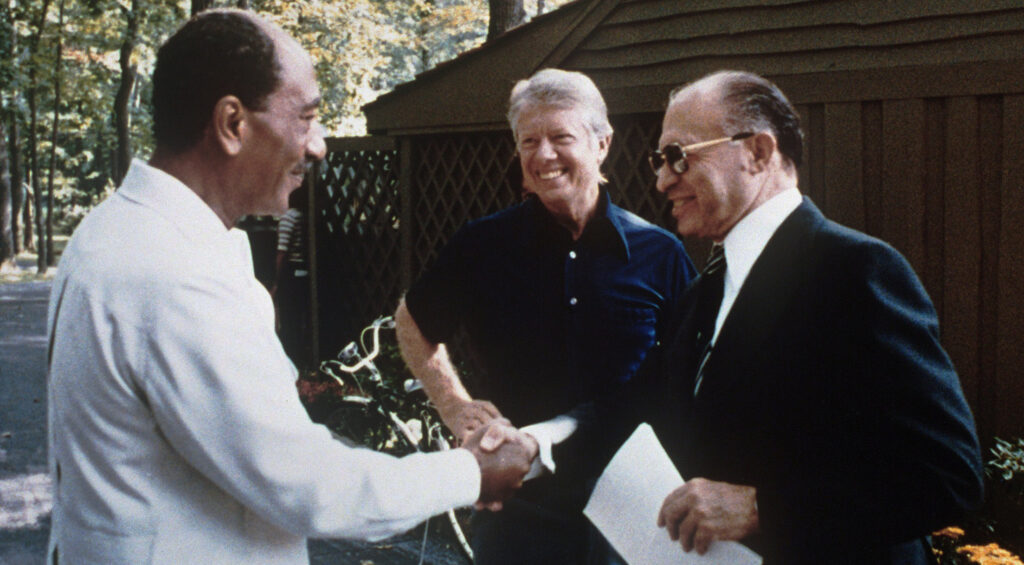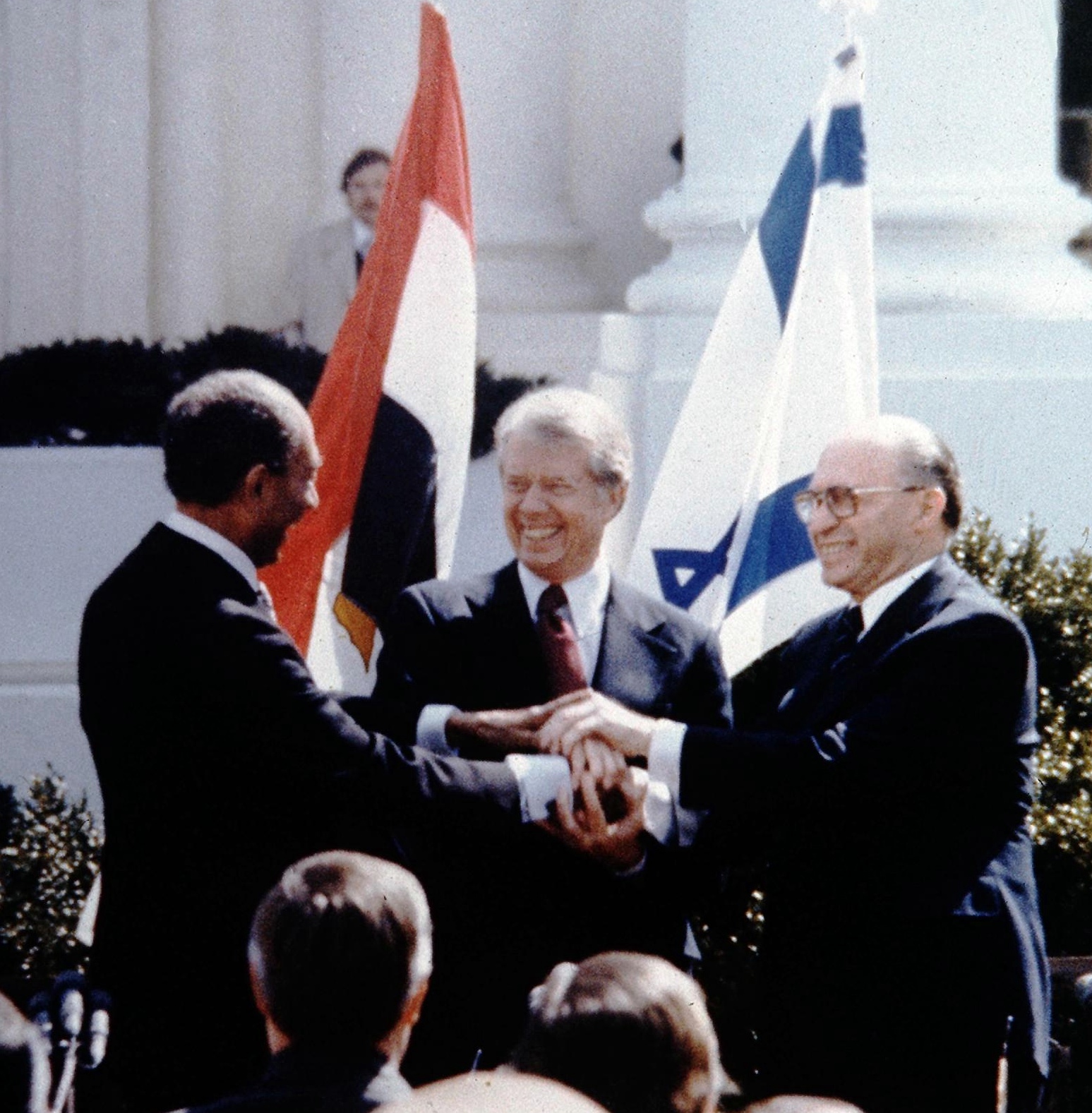In April 1982, as Israel implemented its peace treaty with Egypt, soldiers carried Torah scrolls out of synagogues in Yamit – an Israeli town in northeastern Sinai, just below the Gaza border, established after the 1967 Six‑Day War to anchor Israel’s hold on the peninsula – then loaded crying families onto buses and bulldozed every home so no Israeli footprint would remain. Under the 1979 Egypt–Israel Peace Treaty, Israel was required to withdraw completely from the entire Sinai Peninsula – territory roughly three times the size of pre‑’67 Israel – in return for Egypt’s formal recognition of Israel, an end to the state of war, and a demilitarized buffer to be monitored by an international force. Israeli leaders urged the nation to swallow the pain, promising that peace with Egypt would save lives and was worth the price.
I was two years old when Yamit was destroyed. I did not watch the bulldozers in real time. But I inherited a narrative, along with others of my generation, that Israel’s peace treaty with Egypt was both righteous and successful. Sometimes, it is necessary to give up land in order to get peace. Mature nations must be willing to make hard choices.
It’s time to revisit the narrative. After October 7 – and after years of Hamas rocket fire, industrial tunnel‑building, Iranian weapons pipelines, and terror cash flowing through the Sinai–Gaza border under Egypt’s watch – we have to reopen the file. Egypt received all of Sinai; in return it was meant to keep that vast buffer largely demilitarized and to prevent its territory from being used to arm those firing on Israel. Yet that is precisely what Egypt enabled. The rockets, explosives, and trained killers that Hamas used to murder 1,200 Jews on October 7 moved in large part through Egyptian territory. Egypt has Jewish blood on its hands.
What if the lesson broadcast across the Middle East in 1979–82 was not Israeli courage but Israeli weakness? What if the message heard by Israel’s Arab enemies in Judea, Samaria, and Gaza was: Push hard enough, add American pressure, and ultimately, Israel will uproot Jews from their homes. Land is negotiable. Borders are soft. Push hard enough and long enough, and eventually the Jews will fold.

Yet there were important voices, from the very start, that refused to go along with the standard narrative.
Rabbi Menachem Mendel Schneerson, the Lubavitcher Rebbe (1902–1994), argued that surrendering the strategic depth of the Sinai would endanger Jewish lives and therefore forbidden. The Sages rule that even on Shabbat one fights preemptively when hostile forces mass near a border town (Eruvin 45a); how much more so, he said, when entire population centers rest behind that line. The Rebbe repeatedly warned that signatures on peace treaties from hostile regimes would not restrain them or offer Israel real protection. Give up land and you do not buy peace – you invite extortion.
Rabbi Zvi Yehuda Kook (1891–1982) – son and intellectual heir of Rav Abraham Isaac Kook, the first Ashkenazi Chief Rabbi of pre-state Israel – was the spiritual father of the modern settlement movement. After the 1967 war he taught that the territories restored to Jewish hands are part of a divine trust; to relinquish them is, in his words, a “sin and a crime.” Building Jewish life across the land is not romantic nationalism but rather the covenantal obligation of the Jewish people.
Both the Rebbe and Rabbi Kook saw what much of Israel’s leadership still refuses to admit: the moment you turn God’s Land into a bargaining chip, you teach your children that it is just real estate – and you signal to your enemies that pressure works. And believe me, our enemies noticed – and only pressed harder.
Journalist Tzvi Yechezkeli recently sharpened the point. In our prayers we end the daily Amidah with “sim shalom,” by asking God to “Grant peace.” Shalom is not a handshake; it means completeness, the blessing that comes when a people lives true to its covenant in its land.
But in much of the Arab political world, “peace” often functions as a hudna – a temporary ceasefire the weaker side accepts when it knows its opponent is stronger. It is a pause taken from weakness to buy time, rearm, and strike again when conditions improve.
If we speak the language of shalom, enduring peace, while the other side means hudna, we lower our guard while they prepare for the next round of fighting. Camp David made that mismatch concrete. Israelis believed we had closed the Egyptian front, while Arabs read the withdrawal as proof that sustained pressure, especially when backed by Washington, could pry more Jewish land loose.

The peace agreement carved Sinai into zones meant to cap Egyptian forces far from Israel’s border: heavy formations concentrated west of the Suez Canal, lighter forces in central Sinai, and only a thin Egyptian police presence near Israel and Gaza – backstopped by the Multinational Force & Observers (MFO). Yet over the decades, Cairo repeatedly sought and received “temporary” waivers. Each waiver stuck. Today, armored and mechanized Egyptian army divisions operate in Sinai with air assets, artillery, and intelligence infrastructure at levels never envisioned in 1979. The demilitarized Israel traded land to obtain has, in practice, been hollowed out.
Meanwhile, the Philadelphi Corridor – the thin strip of land where Sinai touches Gaza – became a smuggling superhighway. Decades of tunnels, pipes, and bribed checkpoints let rifles, anti‑tank missiles, explosives, rockets, drones, and cash stream into Hamas hands. Intelligence veterans have long flagged Egyptian officers looking the other way. After the massacre, IDF units mapping Gaza’s underground network traced supply lines back toward Egyptian soil. A peace partner does not allow an arsenal to be built mere meters from its side of the fence.
Yet the Israeli government remained silent. Because Israel was determined not to “lose” its successful peace with Egypt, it rarely criticized its “peace partner” – even as Egyptian state media pumped out anti‑Israel incitement, Egyptian classroom teachers demonized the Jews, and Egyptian forces repeatedly violated the peace agreement. We desperately held onto the appearance of peace, even as Egypt openly recognized it as a hudna – banking Israeli concessions and maneuvering for the next demand.
After Sinai, the broken “land for peace” formula became the diplomatic template for “peace” with Israel. The Oslo Accords of the mid-90s repackaged it for Judea, Samaria, and Gaza. The results are well known: weapons were given to newly empowered Palestinian forces, which they then used to murder Israelis. Buses, cafés, Passover seders, and street corners were bombed. More than a thousand Israelis were murdered in the terror waves that followed the 1993 accords, and thousands more were maimed. Yet instead of scrapping the model, diplomats doubled down.
In 2005, Israel executed the Gaza Disengagement – pulling every soldier, farmer, synagogue, cemetery, and child from the Strip, handing its 21 communities to the Palestinian Authority, and trusting international guarantees and Egyptian control beyond Rafah to keep the area demilitarized. Hamas quickly seized Gaza, and spent the next 19 years laying the groundwork for the slaughter of October 7, 2023. None of this was bad luck. All of this began with Camp David and Israel’s peace agreement with Egypt.

“You shall take possession of the Land and settle it.” (Numbers 33:53.) “You are crossing the Jordan to possess the Land.” (Deuteronomy 11:31.) “You shall smite them. You shall utterly destroy them; neither shall you make a covenant with them (Deuteronomy 7:2). And to Israel’s leaders: do not send the nation back toward dependence on Egypt for horses and chariots, for “You must never return that way again” (Deuteronomy 17:16).
God could not have been more clear: Israel’s leaders must not trade away strategic and holy ground. It will only lead to servitude and bloodshed.
Trading land for promises of peace failed because the other side treated those promises as a hudna – a temporary ceasefire accepted from weakness to buy time, rearm, and try again. Real peace comes only when Israel is unmistakably strong and our enemies know further war is hopeless – when they understand there is no hope in resisting a sovereign Jewish people at home in its land. This is why Oslo failed, and why the Abraham Accords worked. True peace follows strength. We must not be afraid to use it.
It’s time to publicly beg forgiveness – from the families forced from Yamit; from the thousands murdered in the terror unleashed after Oslo; from the murdered and kidnapped of the Gaza envelope; from the soldiers who have fallen retaking the Gaza Strip; and from the teachers who desperately tried to warn us before the first bulldozer rolled through Yamit. We owe them not only words, but a vow: to never again trade God’s land for the illusion of peace.




